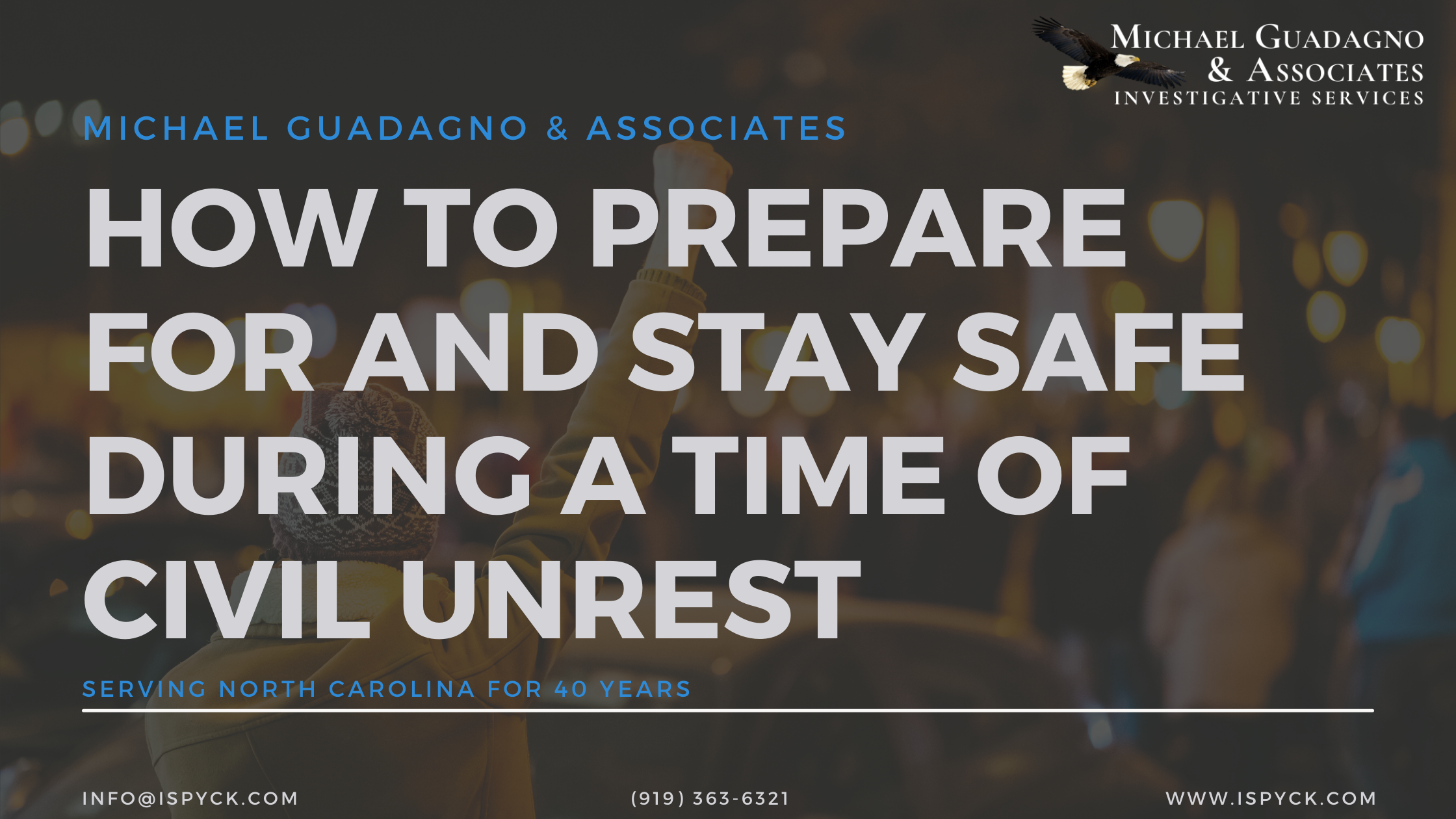
After experiencing one of the most stressful and turbulent years in recent American history, we can finally start to get back to some form of normalcy.
EEHHH! Wrong answer!
Welcome to 2021! Where the pandemic of 2020 is stronger than ever, and the American people are anything but unified. Top it off with the events on January 6th, 2020, and recent threats by multiple extremist organizations to disrupt the presidential inauguration, and you’ve got the ingredients for disaster just three weeks into 2021. January may kick off a year that could make 2020 look like a summer vacation.
What can You do to Prepare for Civil Unrest?
Civil unrest is an activity arising from a mass act of civil disobedience (such as a demonstration, riot, or strike). The participants become hostile toward authority, and authorities incur difficulties maintaining public safety and order over the disorderly crowd. Typically, these types of disturbances happen in bigger cities and towns; however, it’s always a good idea to have a plan in place and the resources you need as a disaster comes in many forms.
Now that we’ve identified and acknowledged a few potential problems we could face in the very near future, we’ve taken the first step in emergency preparedness-identification.
Basic Preparedness for Civil Unrest
- Step 1. Find out what types of civil unrest are most likely to occur in your community and how to prepare for them. Pay attention to what is going on in your community. Contact your local emergency management office, or American Red Cross chapter for information and guidelines is an excellent way to get started.
- Step 2. Create a Family Civil Unrest Plan. Be sure to address different scenarios such as: Stay in Place or Grab and Go. Hold a family meeting to talk about the steps you’ll take to be ready when disaster happens in their community. Put a few plans together that address different situations, such as what to do if parents are at work or when a child is away at a friend’s.
- Step 3. Take action. Each family member, regardless of age, can be responsible for helping the family prepare. Activities include posting emergency telephone numbers, installing smoke detectors, determining escape routes, assembling disaster supply kits and taking first aid or CPR courses.
- Step 4. Practice and maintain the plan. The final step emphasizes the need to regularly practice the plan so family members will remember what to do when disaster strikes.
Be Aware of Your Surroundings and Pay Attention!
Being prepared is essential to keeping your family safe; there’s no such thing as a riot-proof preparedness plan. You should always observe your surroundings and maintain situational awareness. For example, when you walk into a grocery store, consider what you would if a terrorist came in and started shooting? Where’s your nearest escape route? What would you use to shield yourself? Ask yourself the same questions when you attend large gatherings, travel overseas, and go anywhere where there’s a large crowd.
Everywhere You Go, Check Out the Emergency Escape Plan
Whether you’re at work, on a plane or shopping in the mall, please take a moment to look over their posted emergency plan. Know your exits and point them out to loved ones. Ensure everyone knows where to meet if you get split up, like back at the car.
Consider Purchasing Home Protection Equipment and TRAIN TO USE IT PROPERLY!
For many people, the idea of purchasing personal and home protection equipment, such as weapons, door guards, and cameras, is a step they hoped they would never consider. However, we are living in uncertain times, and it’s better to be safe than sorry. It’s never too late to learn how to protect yourself until it is, so take action as soon as you can.
Learn how to fortify your home to protect against home invasion. If your home is in a vulnerable area, you should consider building a safe room or shelter. While riots may not be on your street, people tend to get scared and make irrational decisions during these times, so protect your home.
If you need help assessing your home and installing a home protection system, give us a call.
For Business Owners: Have an Emergency Plan in Place and Discuss it at Least Twice a Year.
First, make sure your insurance company covers damages due to riots and demonstrations, including vandalism. Keep copies of your businesses’ expensive purchases to show proof of which items you owned but were looted or destroyed. Keep a personal emergency kit at work, whether it’s a work kit or a get home bag. If the demonstrations disrupt the local methods of transportation, have a plan for getting home. Be sure to practice safe hiring procedures that include background investigations, so you aren’t inviting trouble into your office.
The Hartford Group put this together to prepare companies before and after an event has occurred.
If you feel your business is vulnerable, give us a call. We can assess your current hiring procedures and provide ways to protect your team and your company..
How to Stay Safe DURING the Civil Unrest
Now that we’ve addressed preparation, what do you do if you find yourself in the middle of a situation?
- Pay attention. Local news and social media do a pretty good job of keeping us aware of potential conflict. If a demonstration or protest is happening near your office or school, take the day off and work from home.
- Avoid places that are having demonstrations. Here is a handy map of all planned protests and demonstrations in the US.
- Do not get involved in a riot. Planning to attend a peaceful protest is wonderful and American as can be. Still, if you arrive and see people with weapons, spears, bricks and Molotov cocktails, you may want to consider turning around.
- Travel with caution and avoid demonstration areas. Listen to local news and pay attention to any large protests heading your way.
- Get Cash. Please keep it in a safe place. Civil unrest may cause banks and ATM’s to close. Depending on how bad things get, you’ll need to get supplies, and if the internet is down, credit card machines don’t work. Cash will be essential.
- Observe locally enforced curfews, ordinances, and regulations.
- Seek Shelter. If you find yourself in the middle of a situation you didn’t plan for, find a place where there are fewer crowds or take refuge in a large, sturdy building, such as a hotel or business. If the riot is politically motivated, you may want to avoid government-owned buildings, even police stations, city hall, the supreme court, etc. These may be targets of their anger. Also, avoid shops with large glass windows.
This article is not meant to scare you. We want you to be safe. Preparation is key, so make sure to have a plan, stock up for a few days (we should all be experts at that right now) and pay attention.
If you are the victim of civil unrest and feel you’re not getting the help you need to seek justice, we can help. Our Special Investigations Team has the tools and resources to investigate these unique situations properly. Email us at [email protected] so we can assess the situation and determine how we can help.



